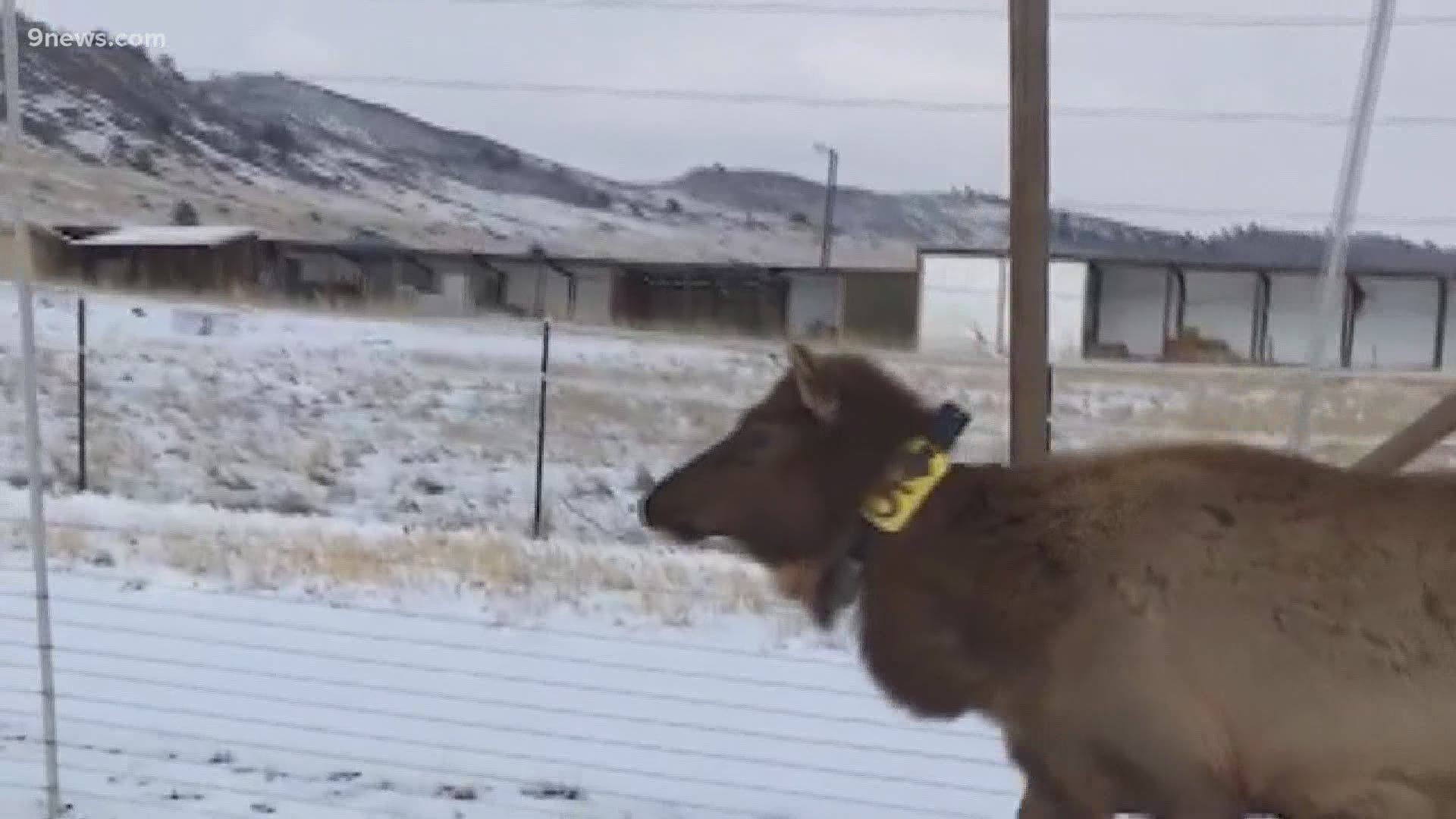COLORADO, USA — Biologists with Colorado Parks and Wildlife (CPW) had no idea that the largest wildfire in Colorado history was going to break out during their elk migration study this summer, but they said it will lead to a new insight into how the animals react to major wildfires.
The Poudre Canyon/Red Feather Lakes elk herd has been tracked by CPW since January. They put GPS radio collars on 30 cow elk there to better understand their habits, movements and lifestyles.
On Aug. 13, that elk herd was disrupted as the Cameron Peak Fire surged to life in their habitat.
That's when a simple migration study turned into a unique opportunity to watch how elk react to a major wildfire.
With the data coming from the elks collars, CPW biologists were able to watch their movements laid out on a map that included the Cameron Peak Fire perimeter.
“Some of these elk didn’t move at all when the fire was burning, and they were actually within the fire perimeter,” said Senior Wildlife Biologist Shannon Shaller.
Schaller said at first, she was quite surprised to see the elk go back into the fire zone, until she realized that they may instinctually know what happens to vegetation after a wildfire moves through.
“Now all of a sudden that ground is getting nutrients that it didn’t have before," Schaller said. "And wildlife generally like that new growth, the new grasses, and they key in on that.”
She said that post fire green-up is a gold mine for hungry wildlife as they prepare their bodies for winter.
CPW gets two location updates per day from the GPS radio collars. Schaller said they have six months of pre-fire data, the data from the elk reaction during the fire, and next they will be able to watch how the elk respond to moving back to their now burned summertime habitat next year.
“It paints a picture that we wouldn’t have know otherwise without having these GPS collars on those elk,” Schaller said.
She says they are still seeing some elk look for some of those post-fire veggies, along with many other wildlife. They are also using the unburned patches of forest for cover.
Schaller said that could be an important part of their routine for several years.
“That’s more of the short term thinking but in the long run, this should really be a benefit to wildlife habitat and expand what we would call their homes or their available habitat,” Schaller said.
She also reminds us that we don’t have to feel sorry for these animals and try to feed them. Even after a major wildfire, they are perfectly capable of taking care of themselves.
SUGGESTED VIDEOS: Wildfires in Colorado

